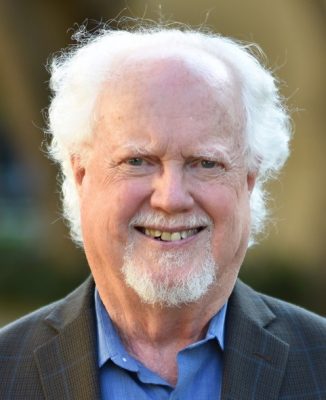
PM2.5 in Health and Atmospheric Science
Date: April 11, 2025; Time: 2:30 PM Location: PWEB 175
Abstract: Air pollution has been a problem as long as there have been cities. Major air pollution disasters in the mid-20th century prompted efforts to understand and control air quality. Episodes in Europe and the eastern USA were linked to primary emissions from coal combustion and heavy industries, while those in the western USA, especially the infamous Los Angeles smog involved photochemical generation of secondary pollutants, both gases like ozone and the smog that degraded visibility as the day progressed. A study of the smog aerosol revealed characteristics that, when combined with efforts to understand the health impacts of inhaled particles, formed the foundation for the first regulations regulate airborne particulate matter concentrations, ultimately leading to PM2.5 as the primary particulate air quality standard. PM2.5, the mass concentration of particles smaller than about 2.5 µm, describes the fine particles that can penetrate to the lower airways, including the alveolar region, when inhaled. This seminar will explore this history and examples of its impact, including the recent southern California fires. Since PM2.5 first appeared in the scientific literature, PM2.5 has been referenced in more than 50,000 papers. With this prominence, many studies limit their focus to PM2.5, or to chemical composition, black carbon, and other properties of that size fraction. Health studies report exacerbations of respiratory and cardiovascular health effects close to roadways, and some suggest that a common suspect, black carbon, is not the culprit, but that ultrafine particles (< 100 nm diameter) may be responsible, but the mass concentration of such particles is usually too small to be detectable within PM2.5. The exclusion of these small particles, and of larger ones, also means that the growing PM2.5 bias in atmospheric particle measurements misses parts particles that govern atmospheric aerosol dynamics, confounding efforts to understand even PM2.5. We shall, therefore, also examine some of the limitations of PM2.5, and highlight research opportunities that this bias creates.
Biographical Sketch: Richard Flagan is the Irma and Ross McCollum/William H Corcoran Professor of Chemical Engineering and Environmental Science and Engineering at the California Institute of Technology. He received his BS in Mechanical Engineering from the University of Michigan, and his SM and PhD from MIT, also in Mechanical Engineering. He joined the Environmental Engineering Science department of Caltech after a couple of years as a postdoc and Lecturer at MIT. Although his PhD research with John Appleton in Mechanical Engineering, and postdoctoral studies were with Adel Sarofim and John Heywood in Chemical Engineering, Flagan shifted his focus to aerosols upon joining the Caltech Faculty. Primarily an experimentalist, his contributions include numerous advances in aerosol measurements, particularly in the nanoparticle regime with the first low pressure impactor, the scanning mobility particle sizer (SMPS), and others. He pioneered chamber studies that determined aerosol yields of a wide range of anthropogenic and biogenic hydrocarbons, and the SMPS to measure size distributions of nanoparticles in airborne measurements. Flagan has published over 420 papers, and holds 28 patents. Though out of print, his textbook has been downloaded over 350,000 times. Flagan has received numerous awards, including the Fuchs Memorial Award of the International Aerosol Research Assembly, the highest award in the field of aerosol science, and the Haagen-Smit Clean Air Award from the California Air Resources Board. He is a member of the National Academy of Engineering, and has received two honorary doctorates. He has served as Chair of the Faculty at Caltech, and is a member of the Board of Directors of the California Council on Science and Technology.